
Photo: Sophie Palmier, Arthur and Dominique de Villepin
Spending time in his home country of Morocco before moving to Venezuela, the United States, and France, former French prime minister Dominique de Villepin has long expressed a deep fascination with the contemporary art perspective of life. Opening a gallery in Hong Kong this month, Dominique and his son, Arthur, have hope their contributions will further enrich the city’s cultural scene.
Former French Prime Minister Dominique de Villepin and His son, Arthur, Unveil The Three-Storey ‘Villepin’ Fine Art Gallery

Photo: Winnie Yeung, Visual voices – Left: Homage to Françoise – 23.10.2003 – Triptych, 2003, Oil on canvas, 195 x 324 cm, Private Collection, Europe – Right: 03.06.70, 1970 Oil on canvas, 46 x 55 cm, Private Collection, Europe
Often surrounding himself with painters and poets such as Anselm Kiefer, Pierre Soulages, Jack Kerouac, and Zao Wou-ki, Dominique de Villepin was particularly enthralled by the Beat Generation – dedicating years with his son to building their own personal collections, which over time, turned their shared passion into a business.
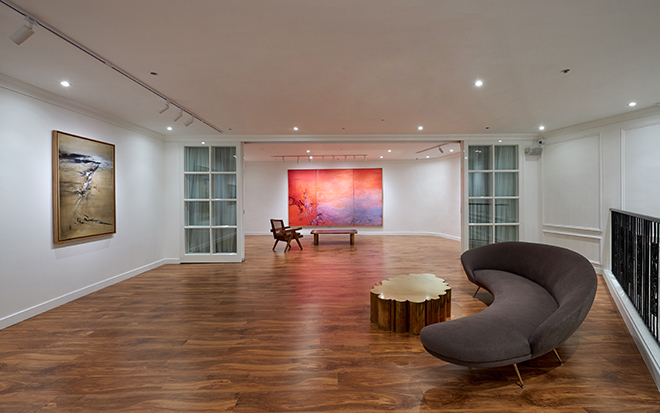
Photo: Winnie Yeung, Visual voices – Left: 10.05.62, 1962, Oil on canvas, 38.2 x 53 cm, Private Collection, Europe -Right: Homage to Françoise – 23.10.2003 – Triptych, 2003, Oil on canvas, 195 x 324 cm, Private Collection, Europe
With the aspiration to change the Hong Kong arts scene’s commercialised landscape, the duo aim to create an intimate experience for both artist and collector, through encouraging more individuals to bond and converse in a communal space – allowing both parties to not only gain a broader, more in-depth perspective, but to live “a real and complete life”.

Photo: Sophie Palmier, Arthur and Dominique de Villepin
Set to unveil on Hollywood Road, the three-storey fine art gallery dubbed Villepin, measures 3,000 sq ft and will serve as a space for conversation, debate and reflection through a diverse variety of artist talks and panels. Showcasing the spectacular work of Dominique’s close-family friends and others, including a selection of Chinese inks, watercolors, lithographs, and rare paintings by the late Chinese-French artist, Zao Wou-ki – the exhibition titled ‘Friendship and Reconciliation’, will present Zao’s inherent search “for a better understanding of Asian art and culture” through a humanized and paradoxical approach to inner peace and identity.
Arthur Provides In-depth Insight on The Three-Storey ‘Villepin’ Fine Art Gallery
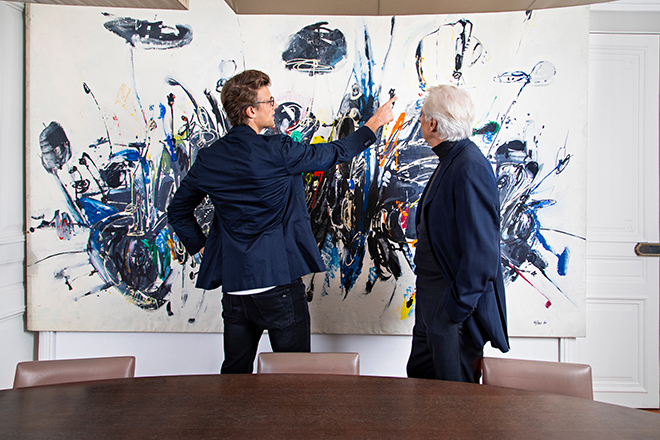
Photo: Sophie Palmier, Arthur and Dominique de Villepin
Dear Arthur, what brought you at first to Asia ? The last article about you was related to a special wine concept associating a Grand Cru in Bordeaux to living artists. You were based in Hong Kong at that time and you still are, is that correct ?
I have been living in Hong Kong for the past ten years and Hong Kong is like home to me. I indeed co-founded Pont des Arts in 2010 with Thibault Pontallier when I first moved to HK and this project and all the others were based on my passion for art and wine. Hong Kong has great potential for the upcoming years to become a central platform in Asia pacific for the art world. The region altogether is at a turning point where Asia will play a more and more important role within the art market and we want to accompany this movement over the next years.

Photo: Winnie Yeung, Visual voices – Left: Untitled, 2005, Chinese inks Right: Untitled (La Cavalerie), 2008, Watercolor, 67 x 102 cm, Private Collection, Europe and Untitled (Gaudigny), 2007, watercolor, 66 x 102 cm, Private Collection, Europe
Tell us more about the opening of VILLEPIN Art Gallery. Your father is associated to this new art venture. Is it your first experience working closely with him?
Yes, my father is associated with this adventure and it was very important for me to create this project as a family one. I think the notion of long term when talking about an art gallery can really be reflected with the idea of transmission, today with my father and one day with the next generation to come. Believing in such a project and such a philosophy of art, I think it’s important to look at it on a long-term perspective. I had the chance to work with my father since I arrived in HK so we already have experience working together, are very complementary and the repartition of roles is very smooth. My father is dedicated to research and strategy, helping with his vision on the world and his experience as a collector, while I am more focused on the operations and the development of the gallery in Asia, thanks to my experience as an entrepreneur in this region for the past 10 years.

Photo: Winnie Yeung, Visual voices – Untitled, 2006 mixed media on paper 35 x 56 cm Private Collection, Europe
How different is VILLEPIN Gallery from other galleries in Hong Kong; you seem to put a large emphasis on the relationship built with art collectors?
I think the gallery industry is at a key moment right now and this is the reason why we want to set up a different type of model The idea is to have more personal and authentic experiences through an exhibition that draws on the understanding and the intimacy of one artist, and in this case, of Zao Wou-Ki. The idea to put the artist and the relationship with the artist at the core of the philosophy of the gallery is very important; at the same time, we advise our collectors to appreciate the artists on the long term and to go deeper in the understanding of their art, whether it is different mediums or periods that one artist has been working on.

Photo: Winnie Yeung, Visual voices – Center: Untitled (Air France), 1971, watercolor, 80 x 60 cm, Private Collection, Europe – Right Untitled, 1986, Chinese ink, 35 x 34.5 cm, Private Collection, Europe
You chose Zao Wou-Ki for as the first exhibition. What led you to this choice? There is a personal & close relationship between your family and the French-Chinese artist.
Zao Wou-Ki is an international artist, one of the only to reconcile and build bridges between different cultures and movements. He was born in China and familiar with the Asian art movement but also with European art since he moved to Paris in 1948. He was also into American art and traveled to the US in 1957 where he learned with the greatest artists from the school of New York. It is so relevant to start our first show with Zao Wou-Ki because he symbolizes in a perfect way the philosophy of the gallery, which is based around Friendship and Reconciliation of cultures. We have known the artist for a long time and we think we can bring another light on the artist’s life and work, to be able to share more on the man as much as the artist, in order to understand how important he is in the art scene of the 20th century.

Photo: Winnie Yeung, Visual voices – Left: The Green Caresses the Orange – 11.06.2005, 2005, Oil on canvas, 195 x 97 cm, Private Collection, Europe
Zao Wou-Ki has had an amazing life, which aspects of his life and art do you like to highlight to art collectors not very familiar with the artist?
My family was close to Zao Wou-Ki and I have great memories of spending time with him. I remember some lunches in the french countryside where he would go out in the garden and start painting watercolors, and I remember his determination and vision about what we could not see. I could finally realize that he was not painting the garden, but the invisible part of the garden and that he was realizing in front of me, his quest of the visible to the invisible. It took me a bit of time to understand this process but now I finally realize how talented and amazing an artist Zao Wou-Ki was. He had this amazing ability to be so joyful and cheerful with his friends and so serious and dedicated to his art and vision.

Photo: Winnie Yeung, Visual voices – Left: The Green Caresses the Orange – 11.06.2005, 2005, Oil on canvas, 195 x 97 cm, Private Collection, Europe – Right: 25.03.2004, 2004, Oil on canvas, 65 x 81 cm, Private Collection, Europe
Can you disclose some information about the upcoming exhibitions at VILLEPIN ?
The next exhibition will be about the second school of Paris, where we want to showcase the works of some great artists that we love and collect, such as George Mathieu, Roberto Matta or Nicolas de Stael. It was a moment in time where France had important artists both as individuals and as a ”movement”. These artists knew each other and worked together, and we want to reflect on this collective initiative that is very important in our current times.
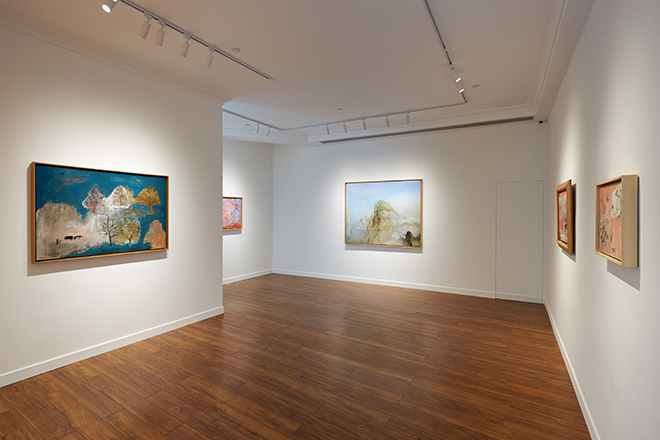
Photo: Winnie Yeung, Visual voices – Left: Untitled (Funerals), 1949, oil on painting, 87,5 x 131 cm, Private collection, Europe – Center: 22.11.2002 – 10.12.2003, 2002 – 2003, Oil on canvas, 130 x 162 cm, Private Collection, Europe
Are you choosing Hong Kong as a base to expand later to other countries and markets? China, Japan, Singapore amongst possible destinations for another VILLEPIN Gallery?
With its unparalleled geographical location, Hong Kong remains the epicenter of the artworld in Asia, even so, we have plans for the project to expand in the future, such as opening in China or even in Paris for instance. We have created a concept that leaves us a lot of freedom and which allow us to commission other exhibitions around the world. We would be happy to participate in other projects, not necessarily within our space but with others, to promote the artists that we love.
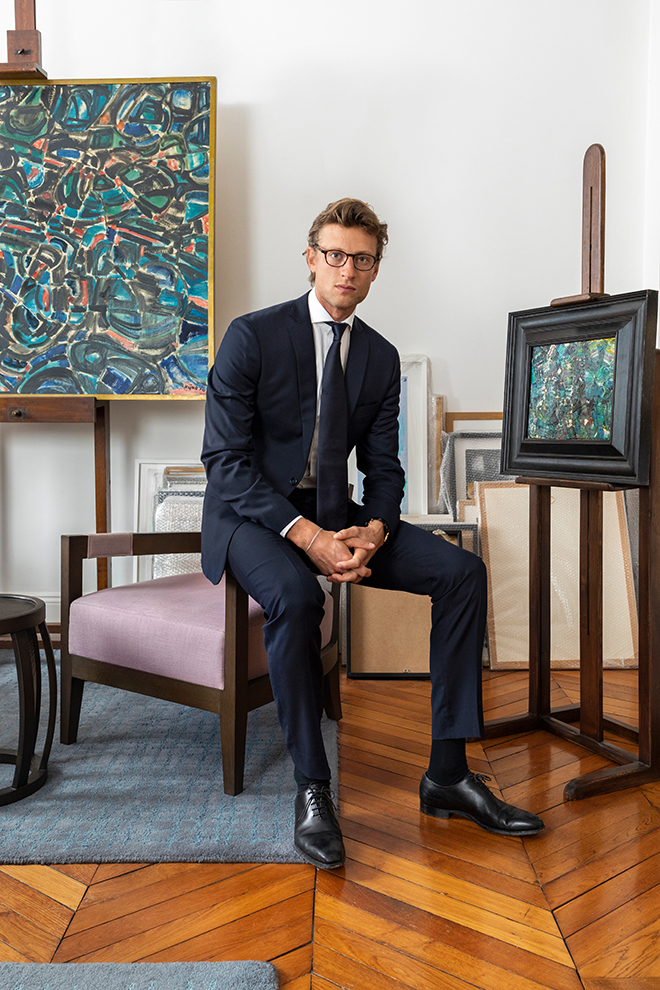
Photo: Sophie Palmier, Arthur de Villepin
You have lived in Hong Kong these past nine years. Could you name for our readers two to three living Asian artists you have been following closely?
Myonghi Kang is a Korean artist that we love and have been collecting for a long time, we have helped her organize a show in HK and we will definitely do more projects with her in the future. A younger artist that I love is, Sun Xun and of course, Kusama who always fascinated me.
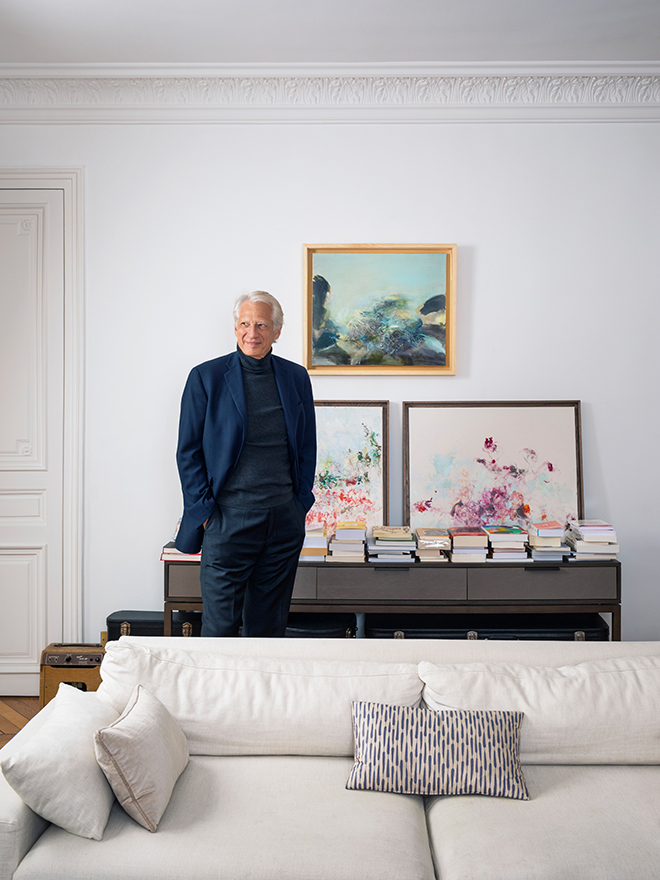
Photo: Sophie Palmier, Dominique de Villepin
Aside your father, is there a mentor who has inspired you in your life and business choices?
To be honest the artists are my guides and the ones that inspire me the most today. In the past, they helped me during tough times when the way going forward seemed blocked and without any hope. Artists like Cezanne, Zao Wou-Ki, Van Gogh, are artists who have always believed in what they accomplished and who were dedicated to their vision of life, who faced great struggle and pain and despite such, have always been bringing beauty and a sense of eternity in their paintings.
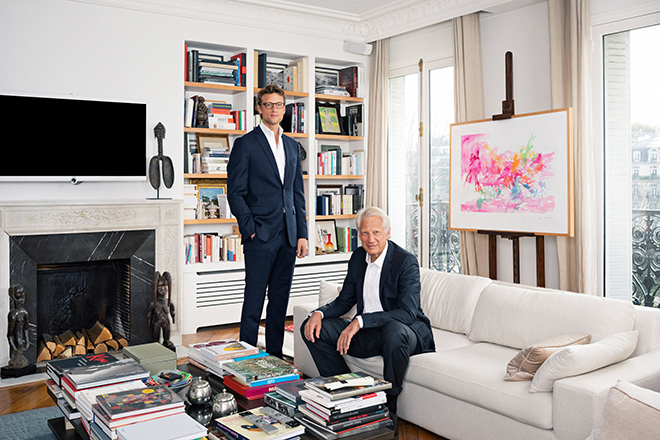
Photo: Sophie Palmier, Arthur and Dominique de Villepin
What lessons should humanity learn from the current COVID-19 crisis?
It is a very difficult question because I think everyone has his own experience in how they live the Covid19, especially the ones facing the most difficult fight: the medical staff all around the world. On my side, what I can learn from the crisis is that nothing is eternal and that we should live our lives with great intensity and emotion and keep in mind what’s important for us.
